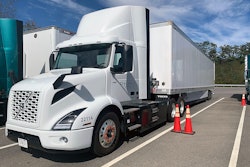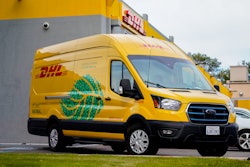President Joe Biden's new infrastructure law represents a landmark investment in transportation sustainability — allocating $65 billion to upgrade the nation’s electric power grid and $7.5 billion to build 500,000 electric vehicle (EV) chargers by 2030.
While sustainability – specifically, electric vehicles – have received a lot of attention in recent years, it’s interesting to note that on August 30, 1967, then-California Governor Ronald Reagan approved the Mulford-Carrell Air Resources Act to create the State Air Resources Board. Since its inception, CARB’s objective has been to create policies that address more stringent air quality regulations and reduce air pollution in California.
CARB policies and positive results in driving down air pollution have led to 17 additional states adopting CARB regulations, but not all of them have made regulatory policies just yet. In anticipation of stricter regulatory requirements for zero-emission vehicles (ZEVs) it is anticipated that the grid will need grow by 30% to meet the demand. This increase is leading utilities and charging station companies to look at ways to provide power back to the grid using Vehicle to Grid (V2G) chargers to support the final 10% anticipated demand growth for electrical energy.
Keep in mind that if 50 Class 8 tractors were on peak charge at the same time, they would use 9 MW of electricity – the equivalent of the power used for the Empire State Building.
As you begin to develop your strategic plan for EV implementation the following are some general thoughts to consider:
• Many fleets currently are oversizing the spec on the batteries to accommodate for 95% of their routes, not realizing that most Statement of Charge (SOC) is at 35% and that most equipment can be charged in the remaining time of the day.
• Fleets should start out slow and small as they transition to EVs and optimize the ROI yet still realize what the strategic plan is to lower infrastructure costs.
• Some locations might be better due to operational risks than other. Consider things like power disruption from things such as hurricanes. How will you plan for these disruptions? Will you rent equipment during outages or even have generators to keep the business running? Those are important considerations.
• Know your long-term goal so you don’t install infrastructure and then have to change transformers as you adopt more vehicles. Build for the future. It may cost more initially but will be the cheaper option in the long term.
• Battery efficiency is impacted below 20°F and above 95°F. Within 20°F and 95°F there is a < 5% impact on the efficiency. When calculating your battery efficiency, you will need to divide kilowatts and mileage to get your results, versus diesel which uses mileage and MPGs.
• An inefficient e-powertrain adds 25% more of a load to the grid. Make sure you spec properly.
• Transmissions can be 98.5% efficient. A 1% efficiency improvement equals a 2x improvement in regenerative braking which equals up to a 20% charge of the battery.
• Batteries need to be spec’d for fast charging stations. These stations are designed to charge at 300kw to 600kw, with charge times taking about an hour.
There are a lot of factors to consider on the road to a more sustainable trucking future. Fleets need to begin exploring these factors as the develop their strategic plan for moving EVs into their operation.












